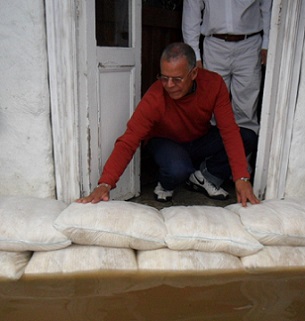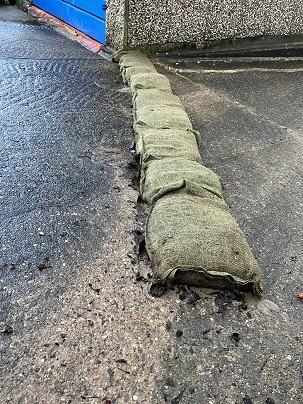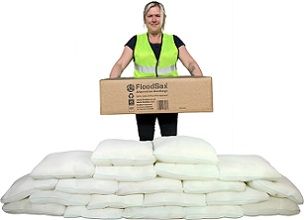 FloodSax alternative sandbags keeping filthy floodwater out of homes
FloodSax alternative sandbags keeping filthy floodwater out of homes
 Old-style sandbags can quickly decay once they come into contact with water
Old-style sandbags can quickly decay once they come into contact with water
 All these 20 FloodSax sandless sandbags came from this one easy to carry box
All these 20 FloodSax sandless sandbags came from this one easy to carry box
Council where 19,000 properties are at risk of flooding won’t provide any more sandbags
A council in one of the UK’s most vulnerable flood areas where 19,000 properties are at risk of flooding has said it will no longer provide sandbags.
Somerset Council says its decision makes it absolutely clear that home and business owners are responsible for their own flood protection.
And it warns: “You do not need to live near a river or watercourse to experience flooding. In Somerset there are approximately 19,000 properties which are at risk from surface water flooding.”
Councils have no statutory responsibility to provide sandbags and most now don’t, with Somerset the latest to join the list.
The council states on its website: “It is the responsibility of the property’s owner to protect their properties from the risk of flooding, particularly if it is in an area that is known to be likely to flood.
“So do not wait for a flood to happen before you take action. We strongly recommend that you do everything you can to protect against the risk of flooding.”
It warns that “water will naturally make its way through the sandbag” but adds: “A modern type of sandbag is now available which does not contain sand. Sandless sandbags work by using super absorbent polymer technology to provide an alternative to traditional sandbags.”
The original sandless sandbag is the FloodSax devised by Yorkshire company Environmental Defence Systems Ltd and around 3 million have been sold worldwide.
Many councils now use them instead of old-style sandbags.
Adur and Worthing Councils in West Sussex say: “The Environment Agency now says that anti-flood devices like FloodSax are the way forward for people to protect their homes.”
Gosport Borough Council in Hampshire urges its residents to use FloodSax, saying it has evaluated the bags. The council adds: “FloodSax have many advantages over traditional sandbags, being easy to store and move, easy to use and, importantly, easy on the environment, having a significantly lower carbon footprint.”
Derbyshire County Council adds: “The county council has a limited supply of FloodSax and these can be provided to members of the public considered to be at risk of flooding for demonstration purposes only. Therefore, the county council recommends residents source their own additional FloodSax should they find that the product works for them.”
Forest of Dean District Council based at Coleford in Gloucestershire has hundreds of FloodSax after the area was badly hit by flooding just before Christmas 2020.Forward-thinking South Bucks District Council has provided FloodSax to people and businesses in a bid to save them from the misery of flooding and also keeps a stock in case of emergencies.
But it warns: “If your home is at risk from flooding please take your own precautions. Remember, it is your responsibility to look after yourself and your property. FloodSax are a useful alternative to sandbags and have been made available to some individuals and communities. They are lightweight and absorb water in situ.”
Lucy Bailey from Environmental Defence Systems said: “Even though councils have no responsibility to provide sandbags it still comes as a shock to many people when flooding is imminent and they expect the council to protect them.
“It just doesn’t happen like that and, even in the rare cases where councils provide sandbags, the chances of them getting them to you in time is very slim.
“That’s why so many councils, businesses and homeowners now have FloodSax as they are very space-saving to store and to deploy them simply immerse them in water which the FloodSax absorbs and retains to transform them into instant sandless sandbags.”